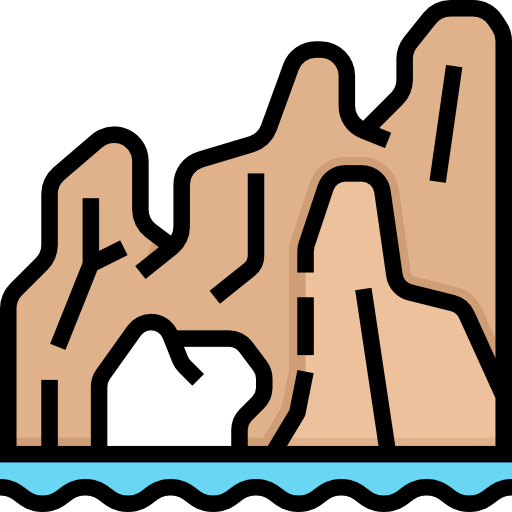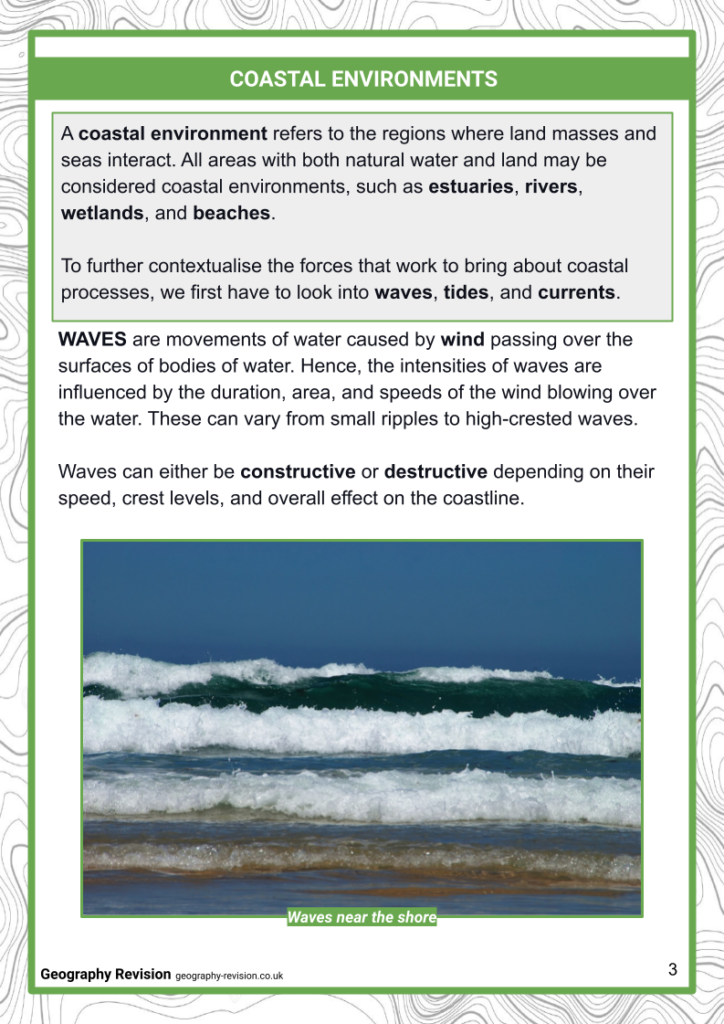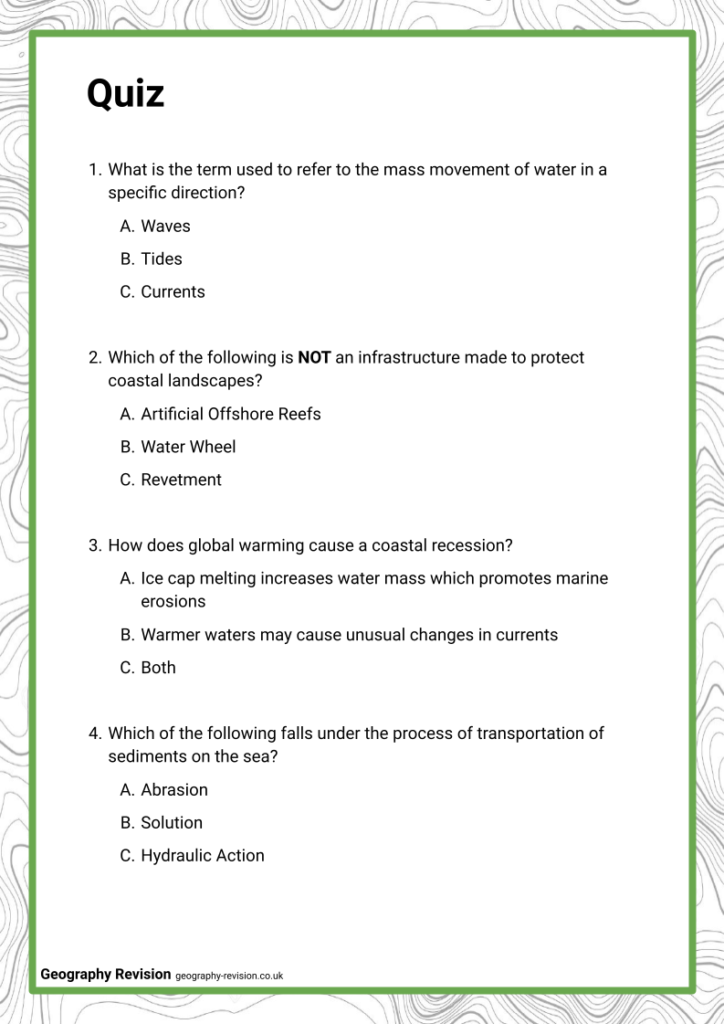Download the Coastal Environments and Processes Module
This module contains:
- An editable PowerPoint lesson presentation
- Editable revision handouts
- A glossary that covers the key terminologies of the module
- Topic mindmaps for visualising the key concepts
- Printable flashcards to help students engage active recall
- A quiz with an answer key to test knowledge and understanding of the module

Coastal Environments and Processes
A coastal environment refers to the regions where land masses and seas interact. All areas with both natural water and land may be considered coastal environments, such as estuaries, rivers, wetlands, and beaches. To further contextualise the forces that work to bring about coastal processes, we first have to look into waves, tides, and currents.
This A-Level Coastal Environments and Processes module will enable students to:
- Identify the different kinds of coastal processes
- Describe the different characteristics and types of coastal landscapes
- Know the importance of coastal processes and coastal landscapes
- Have an understanding of how coastal processes interact with the coastal environment
- Describe the effects of coastal erosion and how it increases risks
- Identify how human activity harms the coastal ecosystem
- Determine how plant succession and vegetation stabilise coastal environments
- Identify acts helpful to coastal management and conservation
More Physical Landscapes Modules
Coastal Environments and Processes is one lesson in our Physical Landscapes module. The other theory lessons can be found below:
Fluvial Environments and Processes
Glacial Environments and Processes




